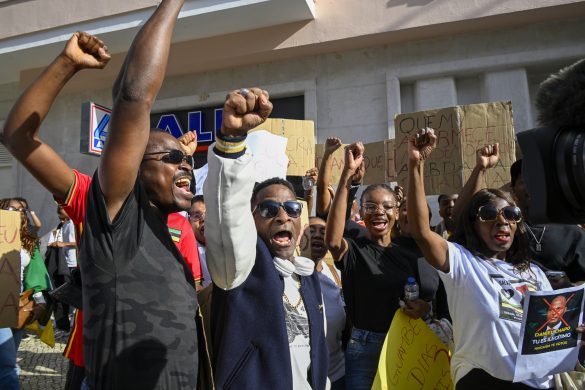I sin første officielle optræden i de internationale klimaforhandlinger, bad Sydsudan verden om hjælp til at finde måder, hvorpå det hårdt trængte, nye land, kan tilpasse sig de klimaforandringer, der præger landet.
Addressing the world at COP 17 in Durban, South Sudan’s minister for environment, Alfred Lado Gore said according to AFP:
„Climate change in Southern Sudan has very, very serious negative effects. In terms of agriculture, this is really catastrophic.‟
Independent from Sudan since only July, the country has been crippled by nearly four decades of conflict that left an estimated two million dead. Global warming would seem to be far down the list of South Sudan’s priorities but is in fact a pressing concern, Gore said.
„It’s a drastic climatic change, and this is manifest in the pattern of rain,‟ he said, speaking before he delivered his country’s first address before the 194-nation UN Framework Convention on Climate Change (UNFCCC).
„Nobody can actually predict when rains come, and this is causing a lot of concerns,‟ Gore said.
„People want to cultivate but no longer know when rains come. And when they come, sometimes they are even floods and they destroy the crops.‟
During South Sudan’s war of secession from Khartoum, its land was „carpet-bombed‟ and sown with mines, Gore said.
Worsening humanitarian situation
Tens of thousands of refugees are on the move, fleeing conflict, searching for food, or both. At the UN Security Council on Thursday, Sudan and South Sudan staked rival claims to the disputed border region of Jau, which the north’s troops attacked last week. They have also clashed over the nearby region of Abyei.
According to IRIN News, aid agencies prepare for worsening humanitarian conditions in Sudan’s South Kordofan and Blue Nile states due to heavy fighting. Since June 2011, some 20,000 refugees have fled South Kordofan and another 30,000 have fled Blue Nile state to South Sudan, Mireille Girard, the representative for the UN Refugee Agency (UNHCR) in South Sudan, told IRIN. This was preceded by the spontaneous return of 12,000 South Sudanese living in Blue Nile following the outbreak of violence there.
Another 36,000 Sudanese refugees are estimated to have arrived in Ethiopia from Blue Nile State since September, according to a bulletin by the UN Office for the Coordination of Humanitarian Affairs (OCHA), which added that the re-taking by the SAF of the Blue Nile towns of Kurmuk and Geissan had led to an increase in the number of refugees crossing into Ethiopia at the beginning of November.
„Given the continued denial of [humanitarian] access to South Kordofan and Blue Nile States, we must now plan for a major deterioration in the condition of people there, including rising malnutrition, food insecurity and the dangers of unexploded ordnance and landmines,‟ Valerie Amos, UN Under Secretary-General for Humanitarian Affairs and Emergency Relief Coordinator, said in a 6 December statement.














